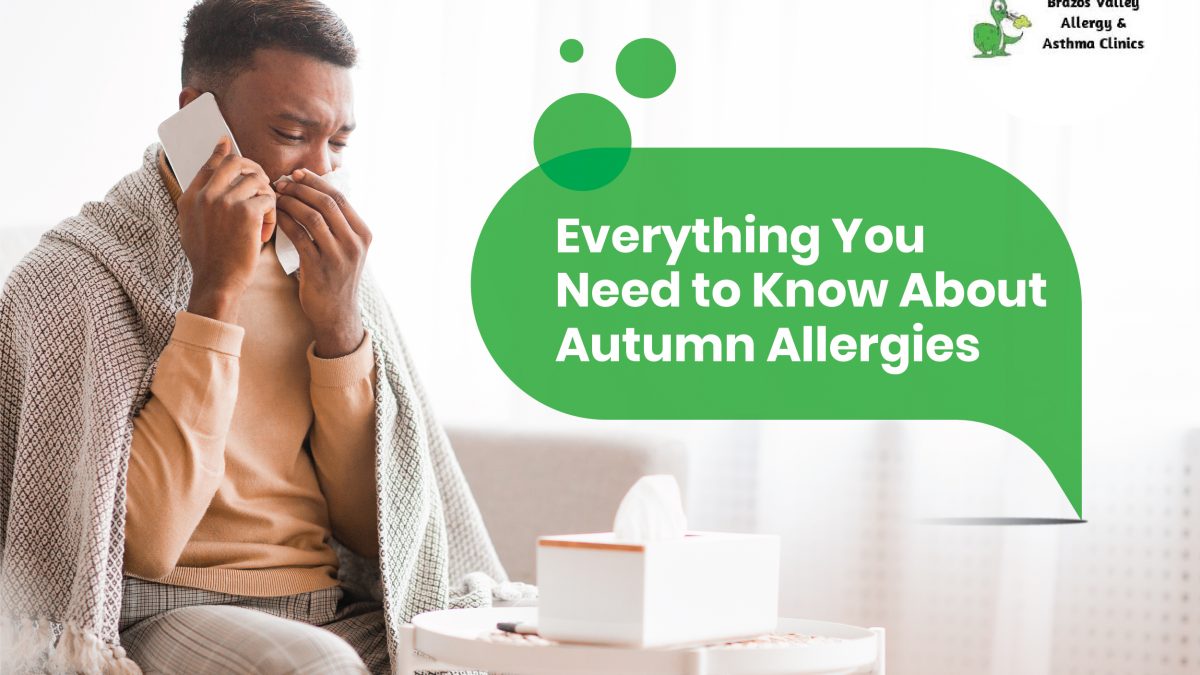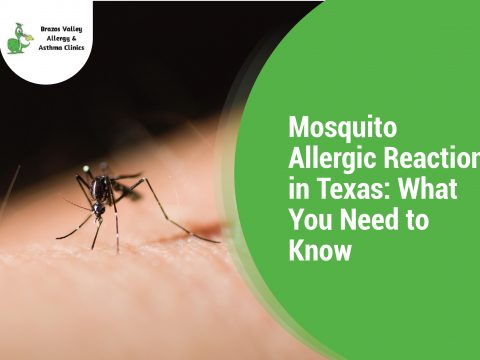- 979-485-9287
- office@bvallergy.com
-
 979-251-7804
979-251-7804
Everything You Need to Know About Autumn Allergies

Treatments and Natural Remedies for Grass and Ragweed Allergy
August 23, 2021
Tips to More Restful Nights With Allergy and Asthma
October 1, 2021
We typically view spring and summer as the classic hay fever season, but autumn brings along its own set of challenges. Although the triggers for this season are different, the symptoms can be just as common. This article will discuss everything you need to know about autumn allergies and how you can manage them.
Common Allergies in Autumn
Ragweed
Ragweed is the primary allergy trigger during fall. The plant grows throughout the Central and Eastern United States. Moreover, its lightweight pollen grains can travel hundreds of miles in the wind. A single plant can release almost a billion grains of pollen. Cool evenings and humid days in late August make the pollen more prevalent. Unfortunately, it can last from September to October. Consult your doctor and prepare your medications ahead before ragweed season begins.
Leaf Mold Allergies
Molds can live anywhere, especially in damp and humid places. The spores can also grow on piles of moist leaves outside. These mold allergies start in the summer and continue through the fall. They can trigger allergic sinusitis or, worse—asthma.
Meanwhile, indoor mold is a problem no matter the season. It grows in your basement, bathroom, or damp areas in the house. Molds also exist when water damage at home occurs. To avoid mold growth, clean your garbage pails frequently and fix any plumbing leaks.
An allergy mold count counts the number of pollen grains or mold spores per cubic meter of air. If mold count is high, people will suffer from hay fever if they inhale the air outdoors. Thus, you can refer to The National Bureau (NAB) for more information on mold count.
Dust Allergies
Dust mites are the leading allergens in your house. They thrive in warm, humid environments. Often, you can find them on the pillows, mattresses, carpeting, and upholstery. That’s why you should wash your pillowcases and bed sheets every two weeks. Dust mites are persistent and too dangerous for your children.
Pet Allergies
Dander consists of microscopic skin particles shed by pets, such as cats, dogs, rodents, birds, and rodent-like animals. Pets’ saliva, urine, and feces can trigger allergic symptoms in people. If you have pets and have been sneezing non-stop, you might want to avoid sleeping with them. Put them in another room to prevent allergen encounters and vacuum daily.
Signs and Symptoms of Fall Allergies
Autumn allergies can cause as many symptoms as seasonal allergies. Only one thing is true—the symptoms are uncomfortable.
Ragweed Allergy Symptoms:
- Itchy and watery eyes
- Itchy throat
- Nasal congestion
- Trouble sleeping
Mold Allergy Symptoms:
- Hives
- Wheezing
- Itchy Eyes
- All the same symptoms as ragweed allergies
Dust Mite Allergy Symptoms:
- Facial pressure and pain.
- Cough.
- Itchy, red, or watery eyes.
- Sneezing.
- Itchy nose, the roof of the mouth or throat.
Pet Dander Allergy Symptoms:
- Cough
- Postnasal drip
- Frequent upward rubbing of the nose
- Sleep disturbance
- Blue-colored swelling under your eyes
Allergy symptoms are similar to those of colds and flu. Consult an allergist when your symptoms last over two weeks.
Treatments and Diagnosis of Allergies
If your allergy symptoms are worsening or last longer, consult an allergy specialist. Depending on your medical history and symptoms, the doctor may recommend skin prick tests or blood tests for allergy testing. Your allergist will recommend a treatment plan that includes other medications which help ease allergy symptoms. It also depends on how light or severe symptoms you have. Allergy treatments that work include:
- Immunotherapy. If other treatments do not completely relieve allergies, your physician might recommend allergen immunotherapy. It can aid you in developing long-term tolerance. Also, you can take it either as a tablet or an injection.
- Nasal decongestants. Use them to ease your nose blockage.
- Corticosteroids. You can take them as pills, creams, nasal sprays, or inhalers.
- Antihistamines. They help reduce sneezing and itchy eyes.
- Nasal steroid sprays. The best treatment for your nasal allergies.
Protect Yourself from Autumn Allergies
- Get a HEPA filter for your HVAC system. As air passes through the filters, it traps particles and allergens such as pollen and pet dander.
- Dust and pet dander can breed allergy symptoms, so be sure to vacuum regularly. For best results, use a vacuum cleaner that can grab dust and pet dander.
- For those with ragweed allergies, remove plants from your yard before they bloom to reduce pollen production.
- You can exercise outside in the evening because pollen levels are lower than during the day.
- Close your windows and turn on the air conditioner at home.
- If you need to mow the lawn or do outdoor yard work, consider wearing a dust mask.
- Dehumidifiers help you keep the humidity inside your home below 50%.
- Change your clothes after working or playing outside.
- Check the daily weather report for pollen and mold counts.
- Stay indoors during high-pollen days. Also, close your doors and windows to keep pollen out.
- Use the dryer to dry your clothes indoors rather than hanging them outside.
- Remove decaying leaves from your yard and gutters.
BVAllergy Can Help
Don’t let your allergies stop you from appreciating the beauty of autumn. You can always speak with our allergist about the best allergy treatments that can improve your daily life.
Paul Jantzi has spent more than 13 years serving the south-central Texas region as an allergist. He is board-certified in allergy and immunology with prior specialty training in pediatrics and internal medicine. Schedule a meeting with him to learn more about immunotherapy and how it can help with your allergy symptoms.




